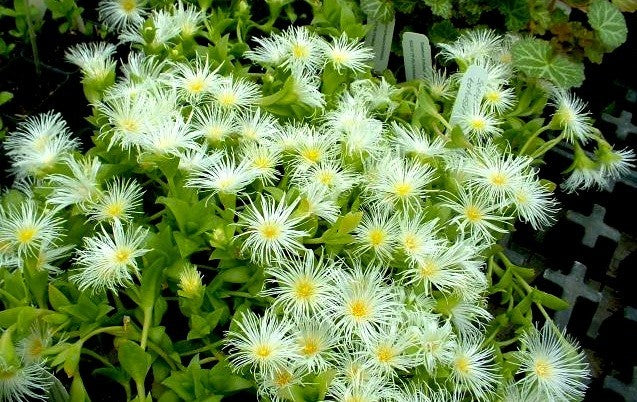
What is Sceletium, and how does it work?
Share
Sceletium, also known as kanna or Kougoed, is a succulent plant native to southern Africa, traditionally utilized by the Khoi-San Bushmen for centuries. It was used to enhance mood, endurance, sensory perception, focus, and cognitive performance (Manganyi et al., 2021). Unlike traditional stimulants such as caffeine, Sceletium reduces cortisol levels decreasing stress rather than increasing it(Swart and Smith, 2016).
Sceletium's unique value therefore lies in its ability to offer heightened alertness and concentration like stimulants, but without elevating cortisol levels. This crucial distinction sets it apart from stimulants like caffeine, which can lead to heightened stress, anxiety, sleep issues, and burnout(Healthline, 2017). Sceletium on the other hand is useful in treating depression, anxiety, and sleep issues while providing stimulant-like focus and concentration through elevated serotonin, dopamine and epinephrine levels.
By providing a natural, sustained boost in energy and focus without the adverse effects on stress hormones, Sceletium presents a distinct advantage for those seeking enhanced cognitive performance and mental clarity without sacrificing well-being. This makes it a truly exceptional option for individuals striving for overall health, productivity, and mental acuity.
How Sceletium works its magic (Pharmacology)
Sceletium contains 32 known alkaloids, making up around 0.8-1.5% of the plant's dry weight(This is what our extracts are made from). The most significant alkaloids are Mesembrine, Mesembrenone, and ∆7-mesembrenone, Although the precise role of minor alkaloids remains somewhat a mystery, they do contribute to the overall effects of Sceletium
Among the 32 alkaloids, Mesembrine and Mesembrenone have been extensively researched. Mesembrine exhibits strong affinity for Serotonin (5-HT) receptors, Serotonin transporters (SERT), vesicular monoamine transporters (VMAT), and a moderate ability to inhibit the production of PDE4. High-mesembrine extracts of Sceletium have shown the ability to release monoamines serotonin, dopamine, and epinephrine by activating the vesicular monoamine transporter (VMAT) (Coetzee, López and Smith, 2016). Sceletium through VMAT activation therefore increases the availability of these essential neurotransmitters improving focus, motivation, energy levels, and overall cognitive function.
In contrast, Mesembrenone has a lower affinity for 5-HT receptors, similar affinity for SERT, a high affinity for cannabinoid receptors, and acts as a potent PDE4 inhibitor
The PDE4 inhibition of Sceletium alkaloids particularly Mesembrenone allows for its neuroprotective properties, and has been found to promote neurogenesis(Terburg et al., 2013).
Additionally, Sceletium alkaloids have been found to function as acetylcholinesterase inhibitors, which reduces acetylcholine degradation, leading to improved memory, focus and enhanced cognitive function(Luo et al., 2022).
Finally, what makes Sceletium unique in treating mental health is that it demonstrates a remarkable capacity to enhance neuroplasticity(Terburg et al., 2013). This enables the brain to initiate transformative changes, bypassing circuits associated with anxiety and depression. Through this process, Sceletium fosters the creation of new, positive thinking patterns and behaviors, which endure even after the cessation of its use. This unique attribute holds the promise of fostering sustained, happier, and healthier mental patterns, offering a path towards enduring positive change.
References:
- Coetzee, D.D., López, V. and Smith, C. (2016). High-mesembrine Sceletium extract (TrimesemineTM) is a monoamine releasing agent, rather than only a selective serotonin reuptake inhibitor. Journal of Ethnopharmacology, 177, pp.111–116. doi:https://doi.org/10.1016/j.jep.2015.11.034.
- Harvey, A.L., Young, L.C., Viljoen, A.M. and Gericke, N.P. (2011). Pharmacological actions of the South African medicinal and functional food plant Sceletium tortuosum and its principal alkaloids. Journal of Ethnopharmacology, 137(3), pp.1124–1129. doi:https://doi.org/10.1016/j.jep.2011.07.035.
- Luo, Y., Shan, L., Xu, L., Srinivas Patnala, Kanfer, I., Li, J., Yu, P. and Jun, X. (2022). A network pharmacology-based approach to explore the therapeutic potential of Sceletium tortuosum in the treatment of neurodegenerative disorders. PLOS ONE, [online] 17(8), pp.e0273583–e0273583. doi:https://doi.org/10.1371/journal.pone.0273583.
- Manganyi, M.C., Bezuidenhout, C.C., Regnier, T. and Ateba, C.N. (2021). A Chewable Cure ‘Kanna’: Biological and Pharmaceutical Properties of Sceletium tortuosum. Molecules, 26(9), p.2557. doi:https://doi.org/10.3390/molecules26092557.
- Swart, A.C. and Smith, C. (2016). Modulation of glucocorticoid, mineralocorticoid and androgen production in H295 cells by TrimesemineTM, a mesembrine-rich Sceletium extract. Journal of Ethnopharmacology, 177, pp.35–45. doi:https://doi.org/10.1016/j.jep.2015.11.033.
- Terburg, D., Syal, S., Rosenberger, L.A., Heany, S., Phillips, N., Gericke, N., Stein, D.J. and van Honk, J. (2013). Acute Effects of Sceletium tortuosum (Zembrin), a Dual 5-HT Reuptake and PDE4 Inhibitor, in the Human Amygdala and its Connection to the Hypothalamus. Neuropsychopharmacology, 38(13), pp.2708–2716. doi:https://doi.org/10.1038/npp.2013.183.
- Wimalasena, K. (2010). Vesicular monoamine transporters: Structure-function, pharmacology, and medicinal chemistry. Medicinal Research Reviews, 31(4), pp.483–519. doi:https://doi.org/10.1002/med.20187.
